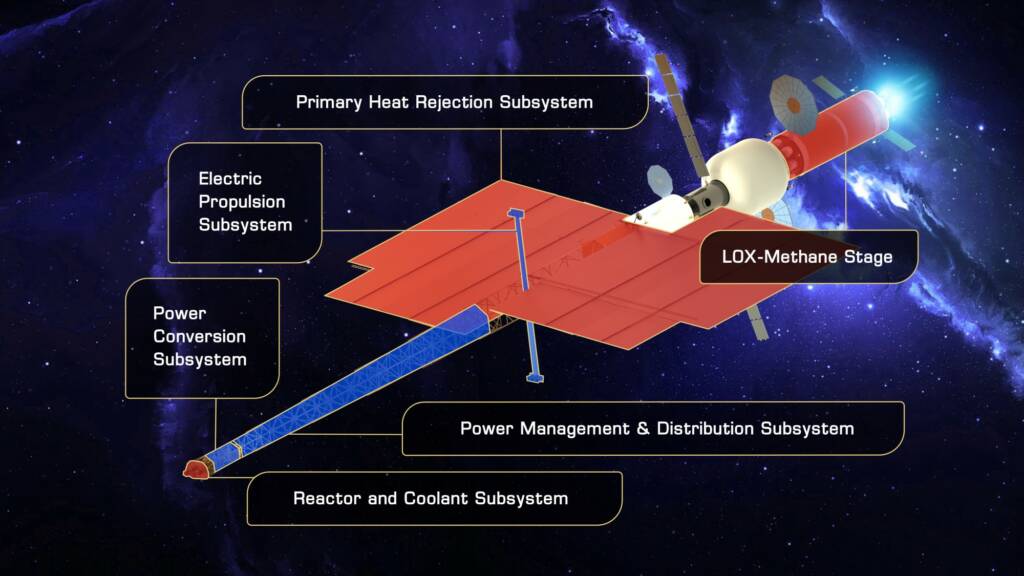Can we make the journey to Mars faster, safer, and more energy-efficient? Space engineers have been grappling with this question for decades. Now, thanks to NASA’s latest research, we might be closer than ever to turning that dream into reality. The key? A project called MARVL — a concept that could fundamentally change how we approach interplanetary travel.
Mars is over 34 million miles (55 million kilometers) away from Earth at its closest approach. With today’s technology, reaching the Red Planet takes several months. And that’s where the problems start.
The longer the trip, the greater the risks. Astronauts are exposed to cosmic radiation and the harmful effects of microgravity, which can degrade the human body. Add to that the mental strain of isolation and the danger of life-threatening malfunctions, and you have a mission fraught with challenges.
For years, scientists have considered nuclear electric propulsion as a potential solution. The idea is simple: a nuclear reactor generates electricity, which powers ion thrusters that expel gases like xenon to create thrust. The result? Higher efficiency compared to traditional chemical propulsion. But, as always, the devil is in the details.
MARVL — Solving the Heat Problem in Space
MARVL stands for Modular Assembled Radiators for Nuclear Electric Propulsion Vehicles. The project focuses on one of the biggest challenges of nuclear electric propulsion — heat management.
Nuclear reactors generate immense amounts of heat, which needs to be dissipated in space. Traditional radiator systems would have to be the size of a football field to effectively cool a reactor. And, unsurprisingly, launching something that massive into space is impossible.
This is where MARVL changes the game. Instead of one giant radiator, the system uses a modular approach. Smaller radiator units are launched separately and then autonomously assembled in space by robotic systems.
This method offers several major advantages:
- Space and Weight Savings: There’s no need to cram a massive radiator system into a single rocket.
- Autonomous Assembly: Robots handle the complex assembly process in orbit, reducing the need for risky human involvement.
- Enhanced Efficiency: Liquid metal coolants flow through the modular radiators, effectively dissipating heat while keeping the system lightweight and compact.

(An artist’s rendering that shows the different components of a fully assembled nuclear electric propulsion system. NASA/Tim Marvel – image taken from “NASA official site“)
MARVL isn’t just about better radiators — it’s changing how we design spacecraft. Instead of modifying existing spacecraft to fit bulky systems, engineers can now design vessels from scratch, specifically optimized for autonomous in-space assembly.
If MARVL succeeds, trips to Mars could be faster and safer. Shorter travel times mean less exposure to harmful cosmic radiation and a reduced risk of technical failures. For astronauts, that could make all the difference between a dangerous mission and a manageable one.As promising as MARVL sounds, it’s still in the development phase. While the concept looks great on paper, turning it into reality poses significant challenges.
Here are the major hurdles:
- Testing in Space-Like Conditions: The liquid metal cooling system must be rigorously tested under extreme temperatures, cosmic radiation, and vacuum conditions to ensure reliability.
- Autonomous Robotics: The robotic systems responsible for assembling the radiators in space need to be flawless. A single error during assembly could jeopardize the entire mission.
- Cost and Time: Developing cutting-edge technology like MARVL isn’t cheap or quick. It will require significant financial investment and years of research.
NASA has given the MARVL team two years to develop the technology and create a small-scale demonstration here on Earth. If the project proves successful, it could pave the way not only for Mars missions but also for exploring the Moon, asteroids, and even the outer planets.
Imagine a future where traveling to the Moon is as routine as a cross-country flight and a trip to Mars takes weeks instead of months. For astronauts, that could mean less isolation, lower health risks, and missions that are safer and more efficient.
To not miss out on fresh articles, useful tips, and exclusive materials, I suggest subscribing to our newsletter:
Thank you for your attention, Lumin Hopper


